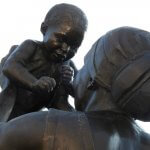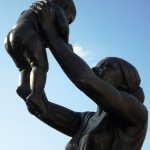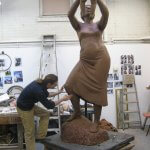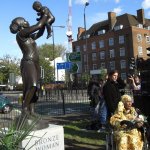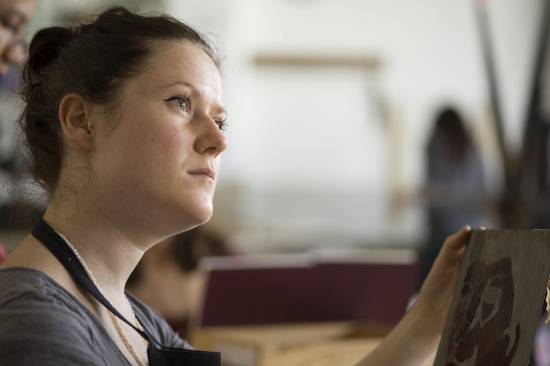
Doing the Portrait Diploma at Heatherleys has been a life-changing and transformative experience for me. I arrived at Heatherleys as a complete novice, and slowly, and at times suddenly, have gained knowledge, insight and understanding. I have surprised myself and most of all been in the presence of true greatness, both in my fellow students and tutors alike.
Camilla Cannon
— The Portrait Diploma
In my 2nd year, I came to a point where I felt like an artist, not an art student. The course enables the student to find one’s own visual language and explore a myriad of ways to approach painting the figure in oils.
I have found the teaching to be inspirational and thorough. Having a variety of tutors over the 2 years means there is no house style and no opportunity to become complacent. The tutors are honest; though supportive they are not there to hold your hand. This makes for strong students and a healthy student/tutor relationship. Ideas are thrashed out and many breakthroughs are made.
As the school is very well connected in the London figurative art scene it is a great way to make useful contacts and launch your career as a painter. I have met some wonderful people who I will stay in touch with long after I have graduated from the school. One of the most important things I will take away from my time at Heatherleys is that through dedication, commitment and an open mind one can go places that you never thought possible.
Proud of our Students
The Bronze Woman Project
Aleix Barbat, a student in his final year of the Figurative Sculpture Diploma at Heatherleys and a winner of the Tiranti Prize for Young Sculptors, was chosen to complete the Bronze Woman statue, a project based on a poem written by Cécile Nobrega.
The sculpture was originally conceived by renowned sculptor Ian Walters. Ian, whose work included the statue of Nelson Mandela in Parliament Square, sadly passed away in 2001. Aleix, influenced by Ian’s design, and with the support of Heatherleys, completed the sculpture representing strength, hope and pride, of a mother lifting her child high above her head.
The Bronze Woman is the first statue of a black woman to be on permanent display in Britain and stands proudly in Stockwell Gardens, South West London where it was unveiled in time to celebrate the 200th anniversary of the abolition of the slave trade and the 60th anniversary of the arrival of Caribbean immigrants to Britain on the Windrush.
Cécile Nobrega, was born in Guyana and came to London in 1968. In the 1990s, she started a charitable organisation, the Bronze Woman Project, which set out to create a lasting reminder, a monument that would reflect the main idea of her poem ‘Bronze Woman’. The building of the monument was part of a project designed to fulfil the following aims and objectives:
- Promotion of the Caribbean community’s contribution to society
- Strengthening the role of women
- Establishing a sense of pride amongst the Caribbean community
- Representing diversity in the art world
